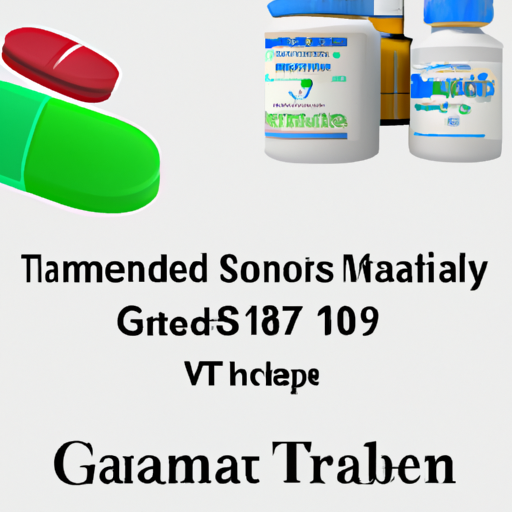Uncategorized
Buy Tramadol and Its Different Forms Online via the ChatGPT-Pharmacy Site
Tramadol: An Effective Medication for Moderate to Severe Pain
Tramadol is a potent pain reliever prescribed by doctors worldwide to treat moderate to severe pain, including post-surgery or accident-related pain. As an opiate analgesic and controlled substance, a valid prescription is required to buy Tramadol online or over the counter. In this article, we will discuss Tramadol’s effectiveness in treating chronic and acute pain and more.
Details on Tramadol
Tramadol is a synthetic opioid that affects the brain and central nervous system (CNS). It is available under the trade names Ultram, Ultram ER, and Conzip. The extended-release form of Tramadol capsules or tablets is used for around-the-clock treatment of chronic ongoing pain therapy. Tramadol is available in various formulations, including capsules, solutions, tablets (immediate release and extended release), and suspensions.
Pharmacology
Tramadol works on the opioid pain receptors present in an individual’s brain and throughout the central nervous system. It also slightly inhibits the reuptake of two neurotransmitters, Serotonin and Norepinephrine. The pain relief effects begin about an hour after the dose is taken, with the effects peaking in 2-4 hours. Tramadol’s half-life in the bloodstream is between 5-9 hours, with complete elimination taking about 5-6 times as long as the half-life. Tramadol is broken down or metabolized in the liver and excreted mostly by the kidneys through urination.
Proper Dosage of Tramadol
The dosage of Tramadol depends on the severity of the pain and the individual’s age. For chronic pain, extended-release capsules and tablets are prescribed at an initial dose of 100 mg once daily, with a maximum dose of 300 mg per day. For moderate to severe pain, immediate-release tablets and capsules are prescribed at a dose of 50-100 mg every 4-6 hours, with a maximum dose of 400 mg per day. Older adults over the age of 75 years should use 25 mg of Tramadol every day, with a maximum dose of 300 mg per day.
Overdose
To prevent an overdose of Tramadol, take only the exact prescribed dose. Crushing or cutting Tramadol tablets or capsules can release a larger dose into the system all at once, which is dangerous. Overdose symptoms of Tramadol include decreased awareness, slowed responsiveness, difficulty breathing, feeling lightheaded, loss of consciousness, constricted pupils, severe drowsiness, irregular heartbeat, cold or clammy skin, unusual tiredness, and more.
Observed Side Effects of Using Tramadol
Tramadol may cause side effects such as headaches, dizziness, nausea, vomiting, constipation, dry mouth, sweating, low blood pressure, hallucinations, confusion, trouble urinating, stomach pain or cramps, itching, seizures, weak pulse, and more. These side effects may go away during therapy as the body adjusts to Tramadol medicine. Inform your healthcare professional if any of these side effects continue to bother you.
Contraindications
Tramadol may not be suitable for individuals with certain medical conditions such as adrenal problems, alcoholism or drug abuse history, brain tumor or head injury history, depression, diabetes, gallstones, hormonal problems, central nervous system infections, breathing problems, sleep apnea, mental illness, phenylketone allergy, seizures or epilepsy history, stomach or abdominal problems, kidney or liver disease, lung problems, stomach or bowel blockage, recent surgery, phenylketonuria, and more.
Interactions With Other Drugs
Tramadol may interact with other medications and substances such as allergy, blood pressure, and motion sickness medicines, asthma or other respiratory disorder medicines, other opioid medicines, benzodiazepine sedatives, sleeping medicines and muscle relaxers, other antidepressants or stimulants, Parkinson’s disease medicines, migraine and headache medicines, serious infection medicines, alcohol, cannabis products, and more.
Abusing Tramadol and its Addiction
Tramadol is a Schedule IV substance with less addictive potential than other opioid painkillers. However, frequent Tramadol users may become addicted and seek illicit drugs to satisfy their cravings. Tramadol dependence occurs when it is used for longer periods of time or at higher doses. Signs of Tramadol addiction include getting excited about thinking of Tramadol tablets, using more than the prescribed dose, doctor shopping, buying Tramadol capsules from illicit sources, lying about Tramadol usage, unsuccessful

 Skip to content
Skip to content


